Normal Restore
The following is a typical end-to-end process for a normal file restore. The actual steps may slightly vary depending on the module you are restoring.
- AhsayOBR can be used to restore data that is backed up with AhsayOBM or AhsayACB.
- Clicking Cancel then Yes at any point during the steps below will close the software completely. If you wish to use it after the software is closed, you will have to launch it again according to the instructions in Install AhsayOBR.
Screenshots used for this guide are based on Windows and will include screenshots for macOS and Linux if applicable.
After logging in to your backup account, select the backup set and destination. Also select Normal restore as the "Restore mode".
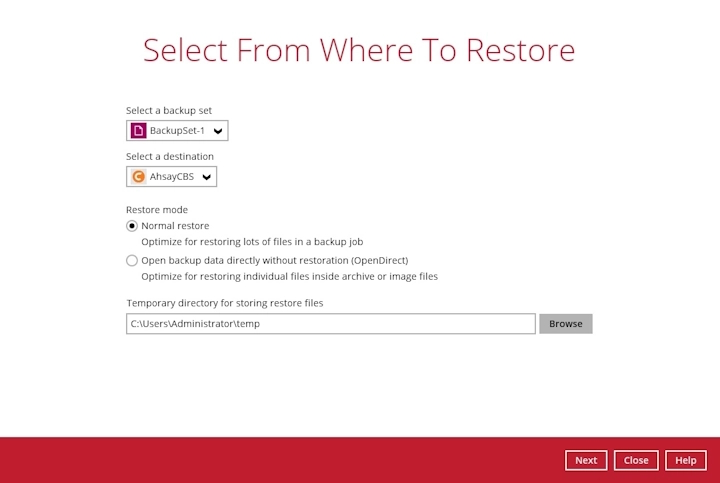
The path of the temporary directory may be changed by clicking the Browse button. This will allow you to select the directory that will be used to store the temporary files.
Click Next to proceed when you are done with the selection.
Enter the encryption key of the selected backup set, then click OK to proceed.
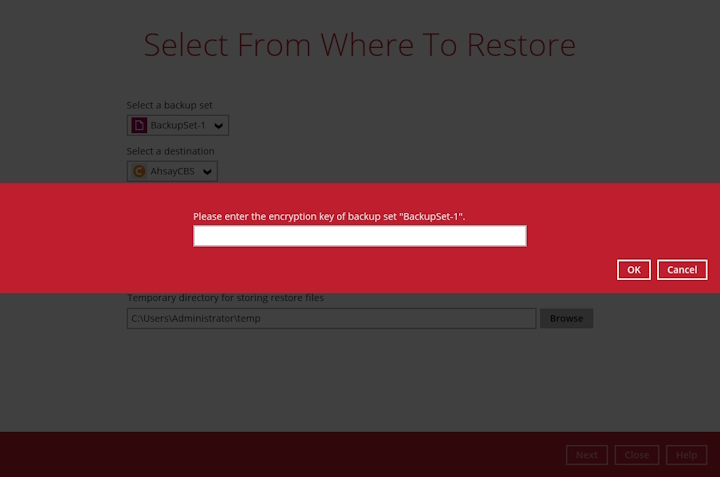
Select to restore files from a specific backup job or from all files available, then select the files or folders that you would like to restore.
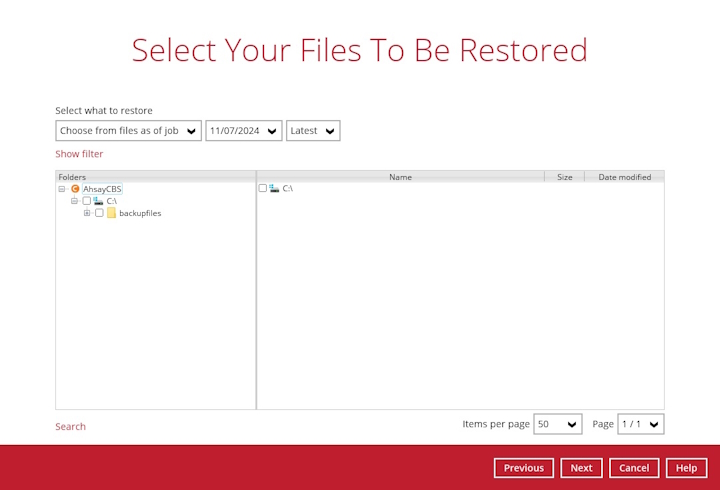
There are two options from the “Select what to restore” drop-down menu:
Choose from files as of job - this option allows you to select a backup version from a specific date and time to restore.


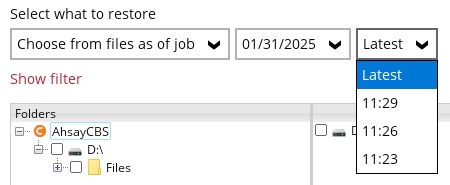
Choose from ALL files - this option allows you to restore all the available backup versions for this backup set. Among all the available backup versions, you can even select only some of the backup versions of a file to restore.
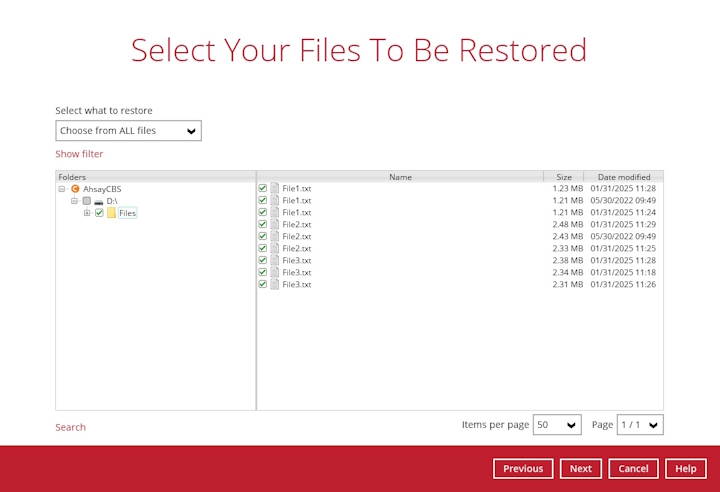
When the restore is done, you will see all the selected backup versions in the restore destination. The latest backup version has the file name as the original file, while the previous versions have time stamps added to their file names for easy identification.
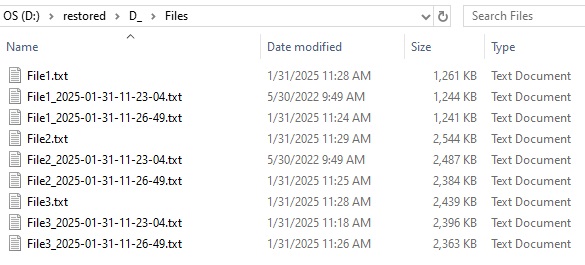
Click Next to proceed when you are done with the selections.
Select to restore the files to their Original location or to an Alternate location, then click Restore to proceed with the restoration:
- Original location - the backed up data will be restored to the computer running the AhsayOBR under the same directory path as on the machine storing the backup source. For example, the backup source files are stored in C:\User\Downloads same as on the computer running the AhsayOBR.
Alternate location - you can choose to restore data to an alternate location on the computer where AhsayOBR is running.
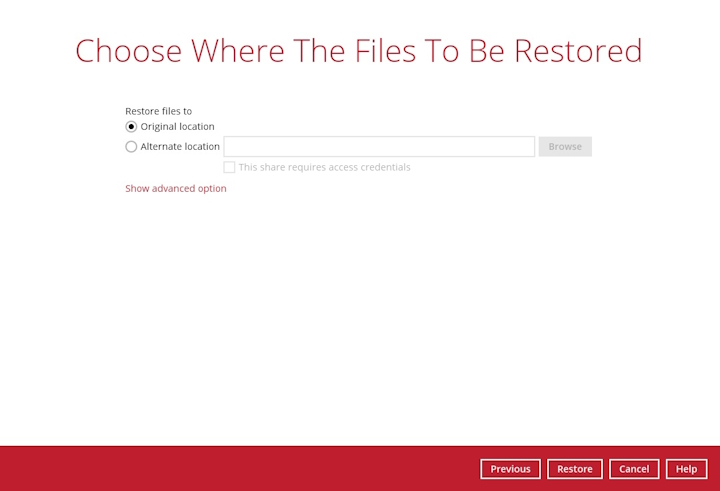
If Original location option is selected, please follow the steps below:
- Select Original location
Click Show advanced option to configure other restore settings.

Restore file permissions
By enabling this option, file permissions of the operating system files will be restored. File permission defines, for example, the right to view or change a file by the system owner/group/individual. If file permission is not restored properly, there is a potential risk that the restored data could be viewed by group/individual who is not supposed to have the access to.
Delete unmatched data in restore location
By enabling this option, the restore process will attempt to synchronize the selected restore source with the restore destination, making sure the data in the restore destination is exactly the same as the restore source. Any data created after backup will be treated as “unmatched data” and will be deleted from the restore source if this feature is enabled. Example:
Two files are created under the Document folder 01, namely doc 1 & doc 2.

- A backup is performed for folder Document folder 01.
Two new files are created, namely doc 3 & doc 4.

- A restore is performed for the Document folder 01, with Delete unmatched data in restore location option enabled.
Since doc 3 & doc 4 have never been backed up, therefore they will be deleted from Document folder 01, leaving only the two files that have been backed up.

Please exercise extra caution when enabling this feature. Consider what data in the restore source has not been backed up and what impact it would cause if those data are deleted since all “unmatched data” will automatically be deleted.Verify checksum of in-file delta files during restore
By enabling this option, the checksum of in-file delta files will be verified during the restore process. This will check the data for errors during the restore process and create a data summary of the in-file delta files which will be included in the report.

Once done with the restore settings, click Restore to proceed with the restoration.
If Alternate location option is selected, please follow the steps below:
Click Browse to choose a location, then click OK to select.
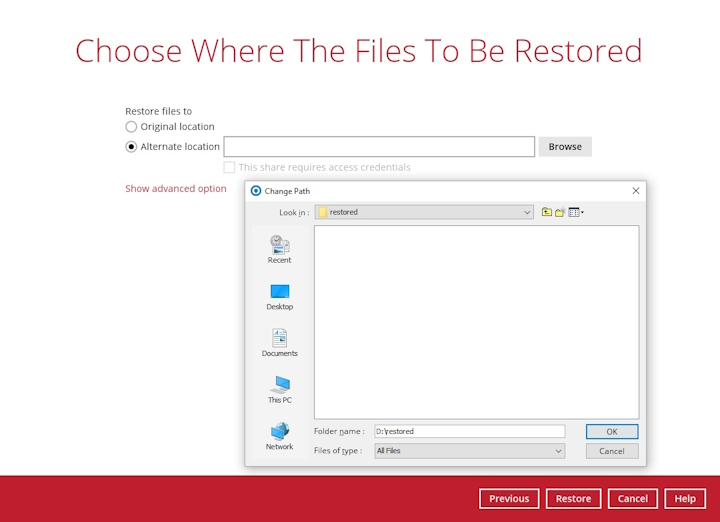
Alternatively, you may also choose to restore data to an unmapped network share.
Click Show advanced option to configure other restore settings:
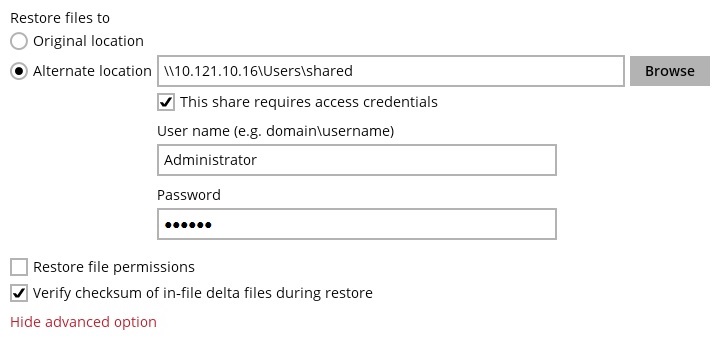
You may refer to the discussion above for advanced option details.
Once done with the restore settings, Click Restore to proceed with the restoration.
Restore job has completed successfully. To check for the restore log, click the "Magnifier" icon.
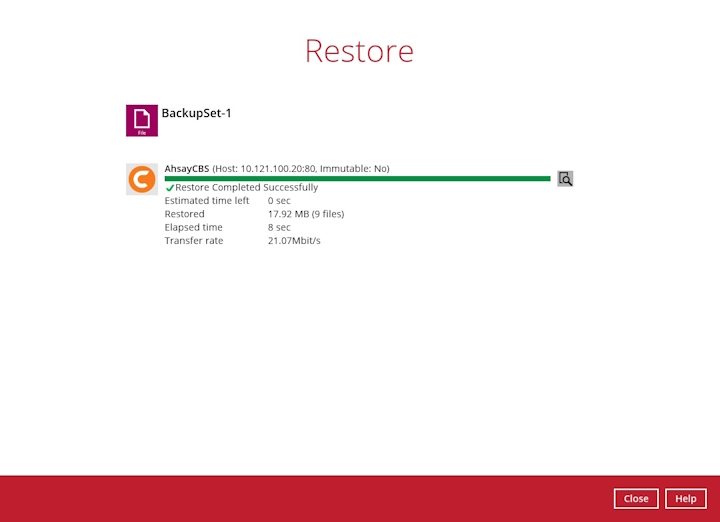
The restore log window will be displayed. Click Close to exit the pop-up window.
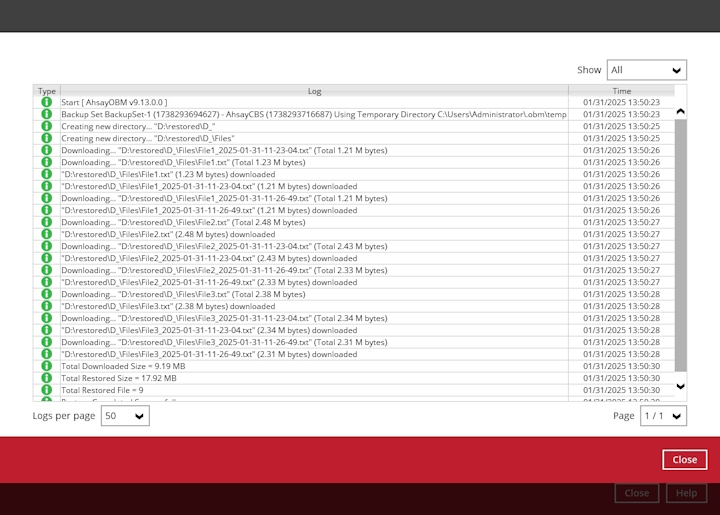
After restoring, click the Close button then Cancel to exit the AhsayOBR, then click Yes. This will completely uninstall the software. If you wish to use it again, you will have to launch it again according to the instructions in Ch. 4 Download and Launch AhsayOBR.
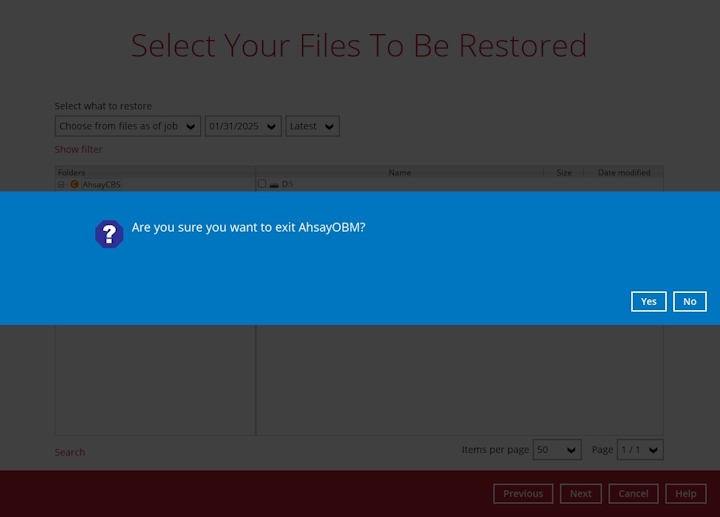

 How-To
How-To